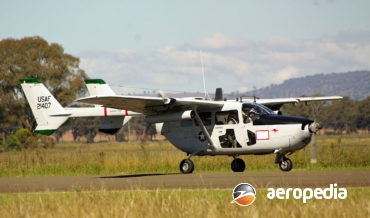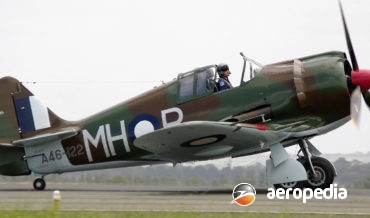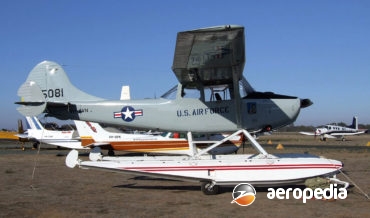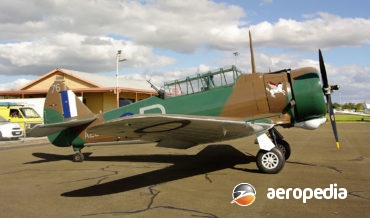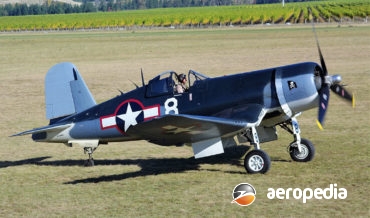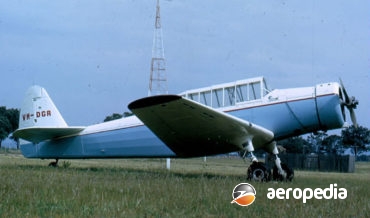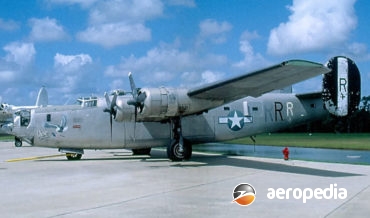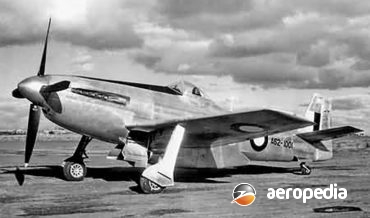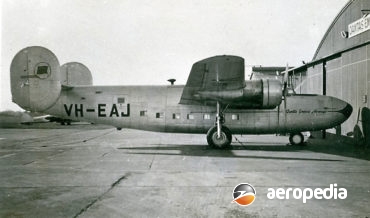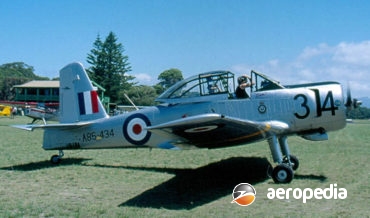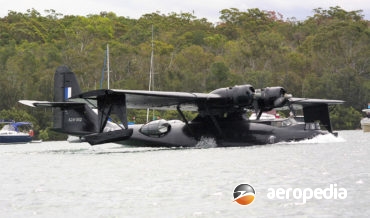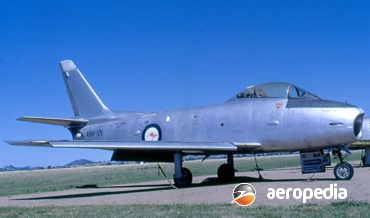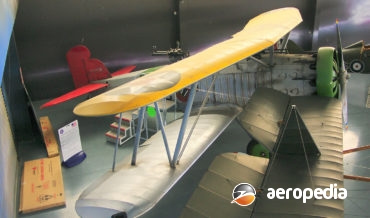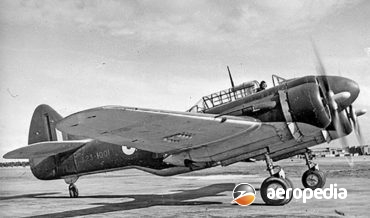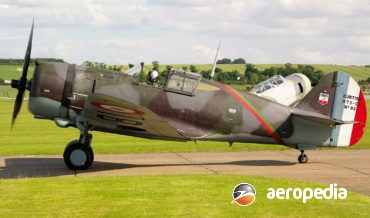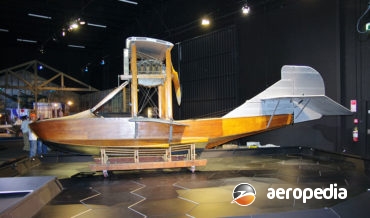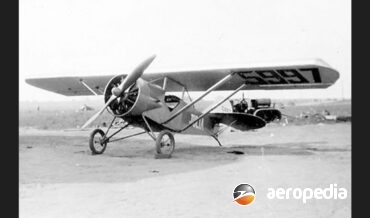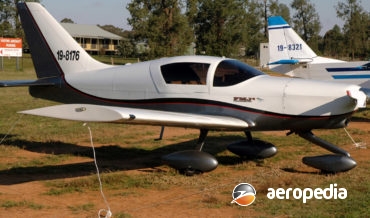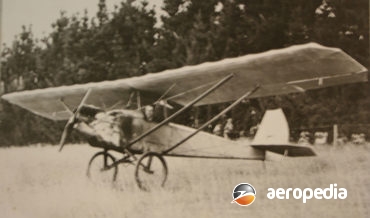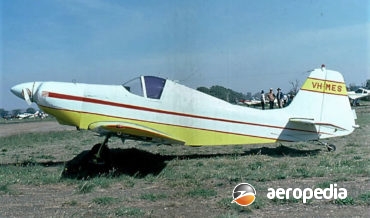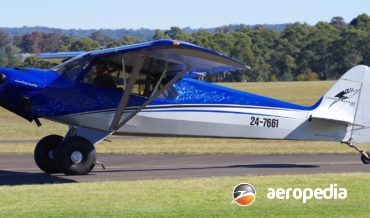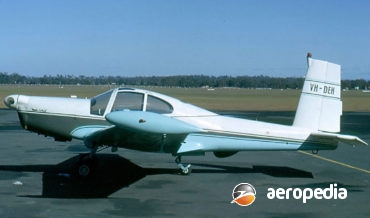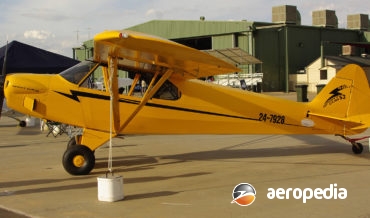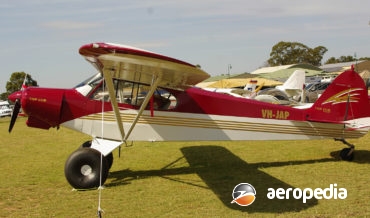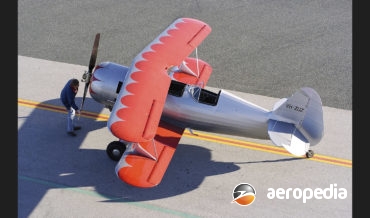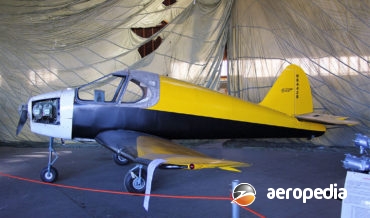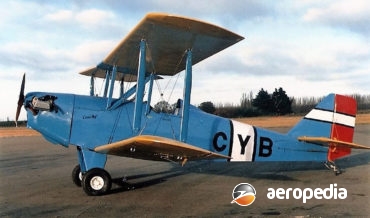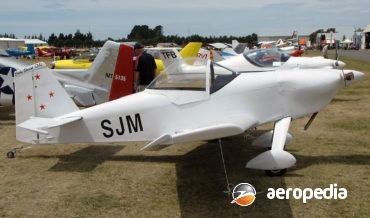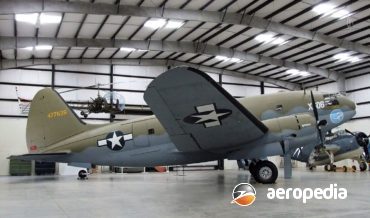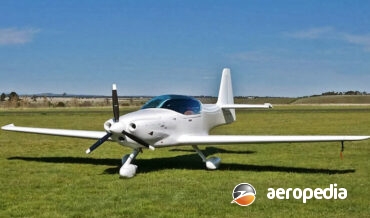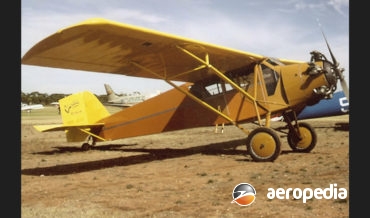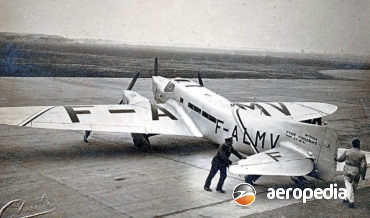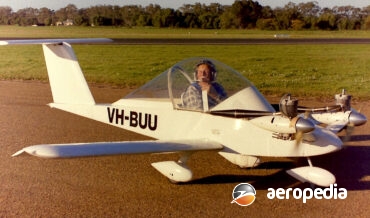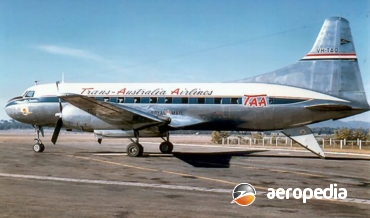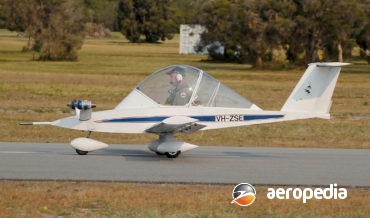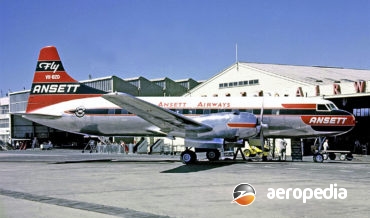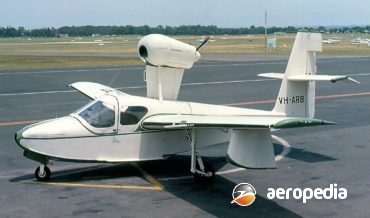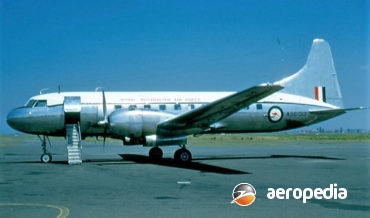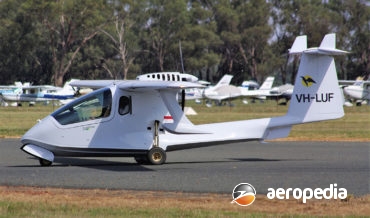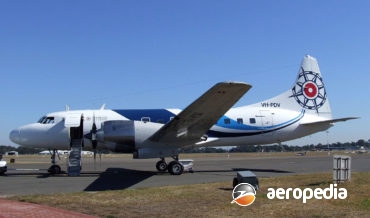All Contents
Contents
A military variants of the Cessna 337, the O-2 series was built in some numbers, 501 O-2As going to the USAF for Forward Air Control duties, and some 31 O-2Bs were used in the psychological warfare role in Vietnam.
David C. Eyre
- May 19, 2019
The suddenness of the Japanese onslaught at the beginning of the war in the Pacific, the speed at which Japanese forces moved, and the possibility of fighter aircraft not being available from overseas sources, led to the decision to design and build a fighter aircraft as soon as possible to
David C. Eyre
- May 19, 2019
In 1950 the Cessna Aircraft Company of Wichita, Kansas, won a competition for the design of a liaison and observation monoplane for the US military services with the Model 305A, a development of the commercial Model 170 with similar wings, tail unit, and landing gear.
David C. Eyre
- May 19, 2019
The Wirraway (an aboriginal word meaning challenge) was a development of the North American NA-32 and NA-33 by the Commonwealth Aircraft Corporation. In January 1942, eight Wirraways engaged a force of more than 100 Japanese aircraft near Rabaul.
David C. Eyre
- May 19, 2019
Acknowledged to be the finest shipboard fighter of World War II, the Corsair was superior in many respects to the Mustang below 6,096 m (20,000 ft), and, although it was designed for shipboard operation, the type was probably operated more frequently from land bases during the war.
David C. Eyre
- May 19, 2019
The Wackett, named after its designer, Sir Lawrence Wackett, was developed by the Commonwealth Aircraft Corporation as an intermediate step between the elementary trainer, the de Havilland DH-82 Tiger Moth, and the more advance trainer, the CAC Wirraway.
David C. Eyre
- May 19, 2019
Although not as famous as the Boeing B-17 Fortress, the Liberator was built in substantially greater numbers and operated on more operational fronts and in a greater variety of variants (15 major) than any other allied or enemy bomber.
David C. Eyre
- May 19, 2019
The CA-15 was the second single-seat fighter designed and built in Australia for service in the Pacific Theatre of Operations, the Boomerang being the first.
David C. Eyre
- May 19, 2019
The requirement for a very long-range transport quickly became apparent early in world War II and , because of its roomy fuselage and good cruising speed, the B-24 series was a logical aircraft to develop to meet this requirement.
David C. Eyre
- May 19, 2019
The Winjeel (an Aboriginal word meaning young eagle) was designed to meet a 1948 specification for an aircraft to replace both the de Havilland Tiger Moth and the CAC Wirraway
David C. Eyre
- May 19, 2019
The PBY Catalina was designed by Consolidated-Vultee Aircraft Corporation, which received an order from the US Navy on 28 October 1933 to build an experimental patrol aircraft designated XP3Y-1. The prototype (c/n 9459) flew for the first time on 21 March 1935 at Hampton Road, powered by two 615 kw
David C. Eyre
- May 19, 2019
Considered to be the best of the numerous derivatives of the North American F-86F Sabre, the CA-27 Sabre had about 60-percent of its fuselage structure changed due to the installation of a Rolls Royce Avon turbojet in place of the General Electric J-47, the Rolls Royce engine requiring a greater
David C. Eyre
- May 19, 2019
In the 1920s Curtiss developed a series of biplane fighters, variants of which were built as civil aircraft, including the Conqueror Mailplane, D-12 Mailplane, and the Lindbergh Special built specially for Charles Lindberg.
David C. Eyre
- May 19, 2019
In June 1940 the Australian War Cabinet voted money for the development of an aeroplane for the RAAF which was capable of dive-bombing, torpedo carrying, general bombing and reconnaissance duties.
David C. Eyre
- May 19, 2019
In 1934 Don R Berlin, chief engineer of the Curtiss Airplane Division of the Curtiss Wright Corp, designed an all metal low-wing cantilever monoplane with a retractable undercarriage.
David C. Eyre
- May 19, 2019
The Curtiss Seagull was a civil variant of the Curtiss MF flying boat trainer produced from 1918, the civil aircraft having a 119-kw (160-hp) Curtiss C.6 six-cylinder in-line engine in place of the V-8 unit in the military variants.
David C. Eyre
- May 17, 2019
In 1912 Harvey Crawford, who lived in Los Angeles, placed an entry in the Third International Air Meeting at Domingues Hills near the city and took part in the event.
David C. Eyre
- May 17, 2019
The Full Metal Jacket is a newcomer to the light sports aircraft market and is of all-metal construction and built at Mildura, Vic, being a development of an aircraft known as The Bullet, which was a single-seat all-composite aircraft but about which little is known.
David C. Eyre
- May 17, 2019
David Cecil Cross of Chatton, NZ, 24 years of age, described as a “technological experimenter” in 1933 built a small monoplane of his own design on a farm at Chatton, north of Gore, NZ. He was one of seven children.
David C. Eyre
- May 17, 2019
Mr Anton Cvjetkovic, a Yugoslav emigrant to the United States, began work in May 1960 on the design of a series of light aircraft, the first of which became known as the CA61.
David C. Eyre
- May 17, 2019
As noted in the Top Cub article, CubCrafters was founded in 1980 by James Richmond in Wisconsin to re-build and modify Piper PA-18 Super Cubs and similar aircraft and eventually to redesign the aircraft and upgrade it to meet customer requirements.
David C. Eyre
- May 17, 2019
Designed essentially as a touring monoplane for the eastern-block countries, but also available for sale to western nations, the Meta Sokol was built by the Avia factory of the Czechoslovakian National Aircraft Industry at Chocen.
David C. Eyre
- May 17, 2019
The CubCrafters CC11-100 was introduced to the Light Sport Aircraft market in the United States to meet a requirement for a lower-powered variants of its range and is an entirely new aeroplane designed from the ground up making extensive use of modern avionics, design techniques and composites including carbon fibre,
David C. Eyre
- May 17, 2019
CubCrafters was founded in 1980 by Mr James Richmond in Yakima, Wisconsin to re-build and modify PA-18 Super Cubs and similar aircraft, and by 2007 more than 120 aircraft had been through the company’s re-manufacturing facility.
David C. Eyre
- May 17, 2019
The Culp Special was designed by Mr Steven Culp of Culp Specialities of Shreveport, Louisiana and is a development he made to the basic design of the Steen Skybolt to increase its aerobatic performance.
David C. Eyre
- May 17, 2019
The Culver Cadet series of light aircraft was designed by Al Mooney and built by the Culver Aircraft Company of Wichita Kansas as a two-seat small side-by-side all-wood construction light aircraft fitted with a 60-kw (80-hp) Franklin 4AC-176-D engine.
David C. Eyre
- May 17, 2019
The Currie Wot sporting biplane was designed by J R Currie in the 1930s, with the first example being built by Cinque Ports Aviation Limited in the United Kingdom in 1937.
David C. Eyre
- May 17, 2019
After the success of the Starlet, John Corby redesigned the aircraft to be constructed in metal, the new model becoming known as the CM-2 Kestrel, and after release of plans to home builders, construction of two examples commenced in New Zealand.
David C. Eyre
- May 17, 2019
One of the most successful freight aircraft available to operators in the 1930s and 40s, the Curtiss C-46 Commando was produced by the Curtiss-Wright Corp in 1936 when it embarked upon the design of a transport known as the CW-20 which had 20 berths as a night sleeper transport, and
David C. Eyre
- May 17, 2019
This light sporting aircraft was initially produced by Corvus Aircraft Ltd, this company later becoming known as Corvus Hungary, the company over a period of eight years developing a fully composite light aircraft for private and training use, production of its aircraft by 2012 being said to be at a
David C. Eyre
- May 17, 2019
One of a range of aircraft produced in the United States just before the Great Depression of the thirties, the Robin still sold well, with more than 700 examples produced.
David C. Eyre
- May 17, 2019
Rene Couzinet was one of the early French aircraft designers, one of his aircraft, the Couzinet 10 (c/n 1 - Arc-en-Ciel) with three engines crossing the South Atlantic Ocean in 1933 on a return trip from Paris to Argentina.
David C. Eyre
- May 17, 2019
The prototype of the Cri Cri series, known as the MC-10, was flown for the first time on 19 July 1973 powered by two 136-cc Rowena 6507J single-cylinder two-stroke engines, and was claimed to be the “smallest twin-engine aeroplane flying” and “the only aircraft able to lift a useful load
David C. Eyre
- May 17, 2019
The prototype of the Convair series of commercial airliners, the Model 110 (NX90653) was flown for the first time on 8 July 1946 at San Diego, being aimed at the market after World War II for the replacement of the DC-3.
David C. Eyre
- May 17, 2019
The Cri Cri is a cantilever low-wing single-seat monoplane designed and produced in France which has been built by amateur builders around the world and is usually fitted with two JPX PUL 212 piston engines which provide 11-kw (15-hp), one fitted to each of the wings in tractor configuration.
David C. Eyre
- May 17, 2019
Following the widespread success of the CV-240 series, the Consolidated Vultee Aircraft Corporation of San Diego, California moved on to the development of the CV-340 series. Initially known as the CV-240A, the prototype (N3401) first flew on 5 October 1951, certification being obtained on 27 March 1952.
David C. Eyre
- May 17, 2019
The skimmer was a successful foray into the production of an amphibian for private use by the Colonial Aircraft Corp.
David C. Eyre
- May 17, 2019
Following the success of the earlier CV-240 and CV-340 models, Convair chose to continue refine the series, despite the inroads then being made into the airline market by the Rolls Royce Dart powered Vickers Viscount.
David C. Eyre
- May 17, 2019
Colyaer SL has been building light sport aircraft for some years, the first aircraft produced being the Martin, which was fully certified and was a two-seater with a fixed tricycle undercarriage, this model becoming available in 1999 and in its later form was known as the Martin 3.
David C. Eyre
- May 17, 2019
A successful series of airliners produced in the 1950s was the Convair CV-240, CV-340 and CV-440 series, a number of which saw service with airlines in Australia, and two were operated by the RAAF VIP flight.
David C. Eyre
- May 17, 2019
Recent Comments
Archives
Categories
- No categories
Categories
- No categories
Latest Posts
Newsletter

